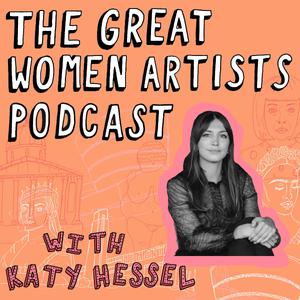Remembering the great Audrey Flack (1931–2024). Earlier this year, I interviewed Flack over a series of interviews before she passed away on 28 June 2024. Audrey was a force, and I hope you enjoy listening to her powerful and moving words.
If you want to learn more, I highly recommend her memoir: With Darkness Came Stars: A Memoir (https://www.psupress.org/books/titles/978-0-271-09674-2.html)
--
I couldn’t be more excited to say that my guest on the GWA Podcast is the esteemed American artist, sculptor, photo-realist painter, and native New Yorker, Audrey Flack.
Hailed for her sculptures of divine goddesses and Biblical characters; her paintings evocative of Old Masters that explore the historic subjects but with pop imagery; and abstract canvases, made in the 1940s and 50s, filled with swathes of movement, colour, and vigour – Audrey Flack, has been at the forefront of the art world.
Brought up in New York City, Flack studied at Cooper Union and then Yale, where she was one of the only women and was taught under Josef Albers – in the early 1950s Flack found herself amongst the burgeoning downtown art scene, where she frequented the Abstract Expressionist haunt, the Cedar Bar, and hung out with her friends who included Lee Krasner, Joan Mitchell, Grace Hartigan. Audrey Flack knew them all.
At the onset of Pop, she turned to photorealist painting, capturing in it distinctively feminist subjects, such as traditional objects associated with femininity and beauty, and then it was to sculpting female archetypes, taking back ancient-old stories steeped in misogynism, and reworking them for a 20th and 21st century audience.
Whilst she paints and sculpts – and is in the collections of museums such as the Met and MoMA, – Audrey also takes the role of lead vocals and banjo with her band “Audrey Flack and the History of Art Band”, where she centres her songs around female injustice, the most recent being about the French sculptor, Camille Claudel.
At 93 years old, you can often find her wearing t-shirts emblazoned with slogans such as Feminist AF, posing in front of her large-scale works, and wearing sunglasses inside.
Flack has written it all down in a memoir – With Darkness Came Stars, one of the most moving, extraordinary books I’ve ever read. Not just for her artistic insights and incredible first-hand analogies of those who she knew in the 20th Century New York artworld, but, for writing, in such genuine words, the truth of what it’s like being a mother, a mother and an artist, and a mother to an autistic child. I was moved to tears a number of times. It made me realise, so acutely, how women and mothers have been treated with such injustice, yet had so much resilience to fight for their voice, their art, their children, and their path. I couldn’t recommend it highly enough.
--
THIS EPISODE IS GENEROUSLY SUPPORTED BY THE LEVETT COLLECTION:
https://www.famm.com/en/
https://www.instagram.com/famm_mougins // https://www.merrellpublishers.com/9781858947037
Follow us:
Katy Hessel: @thegreatwomenartists / @katy.hessel
Sound editing by Nada Smiljanic
Music by Ben Wetherfield
30 October 2024, 12:00 am
